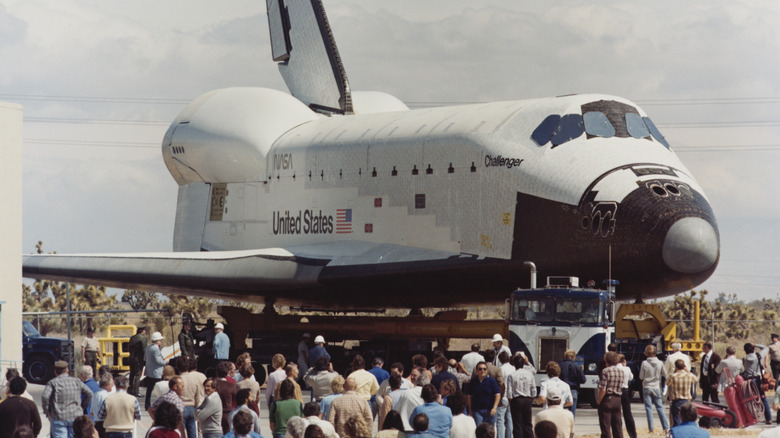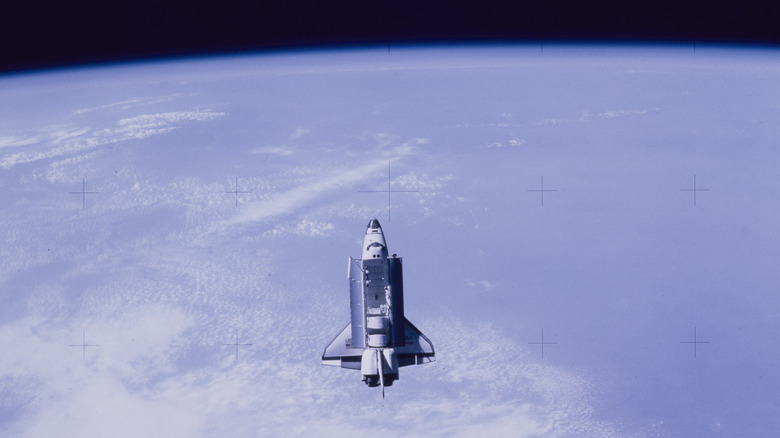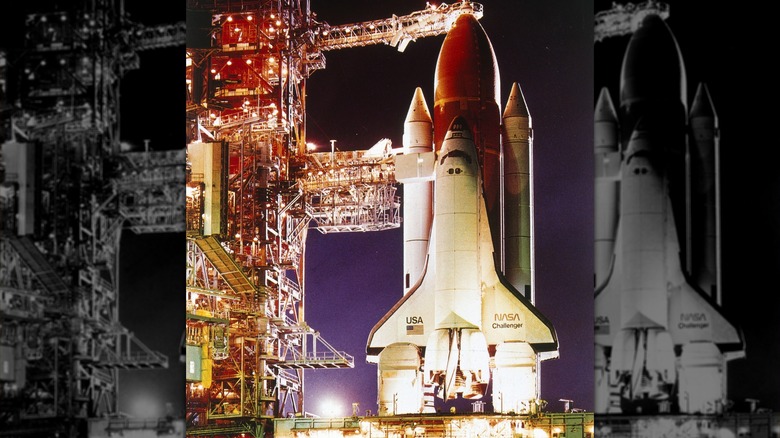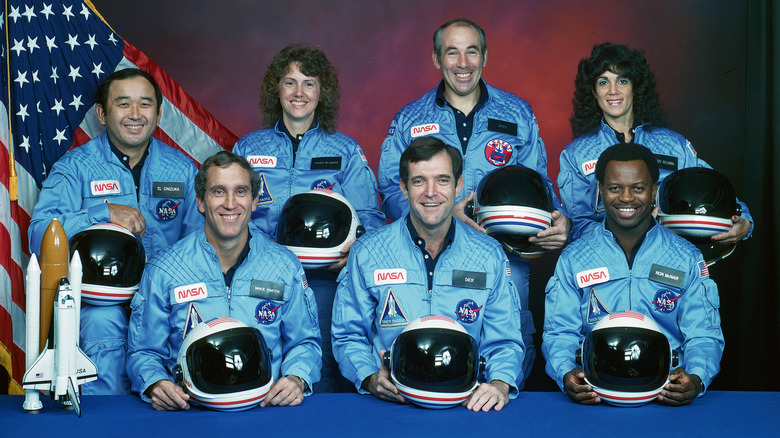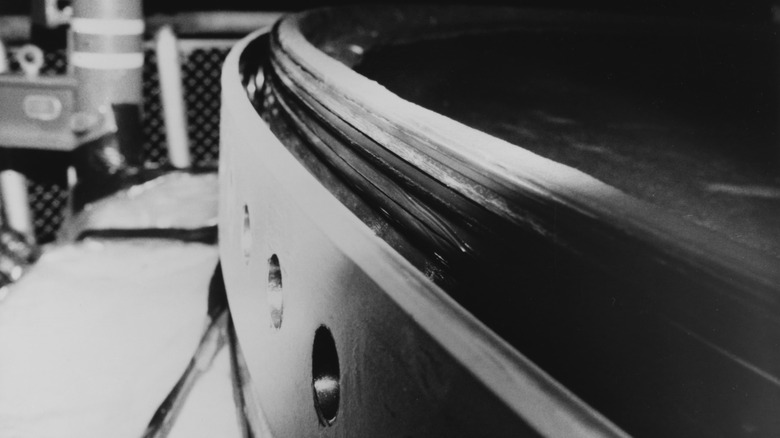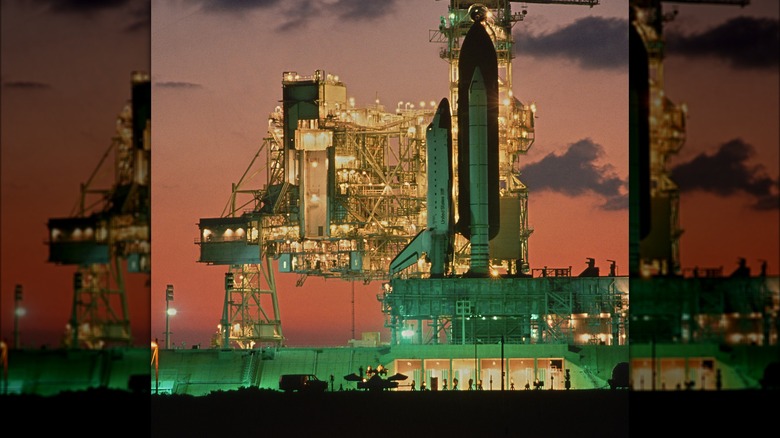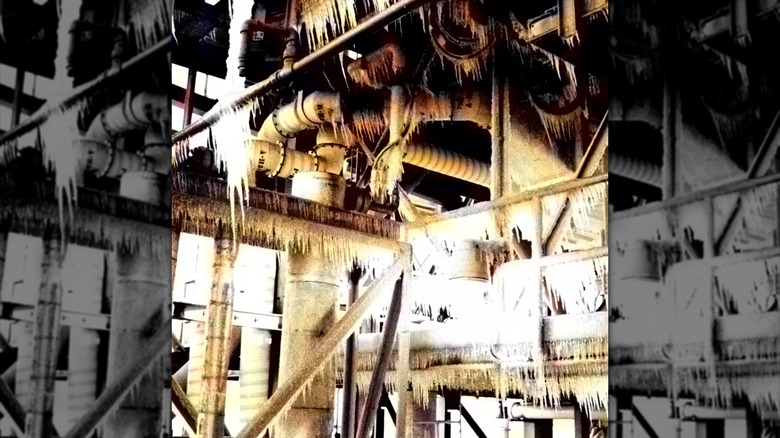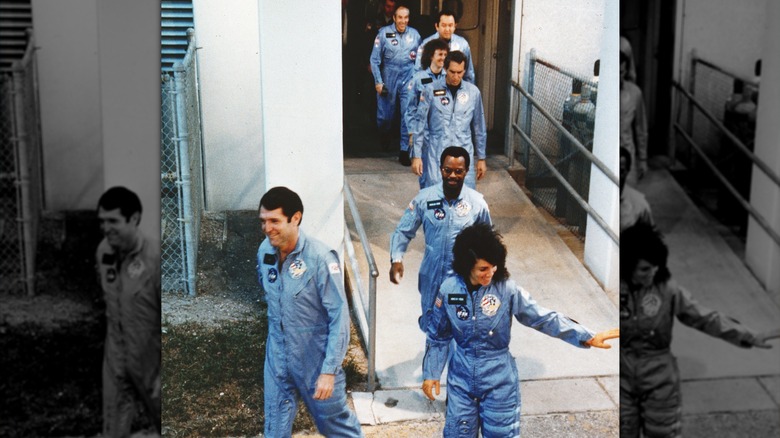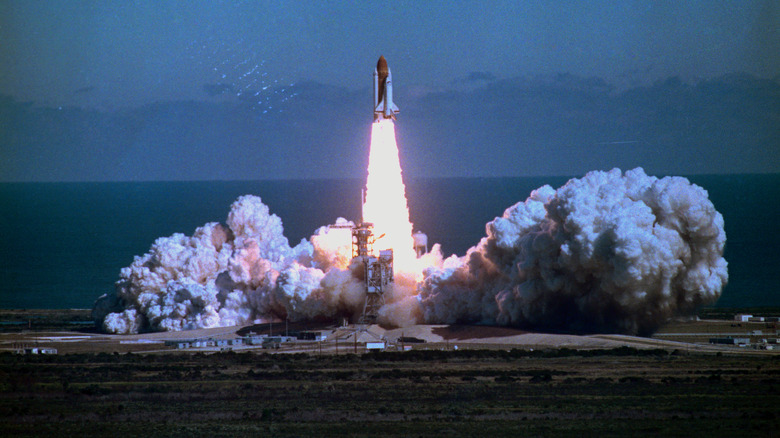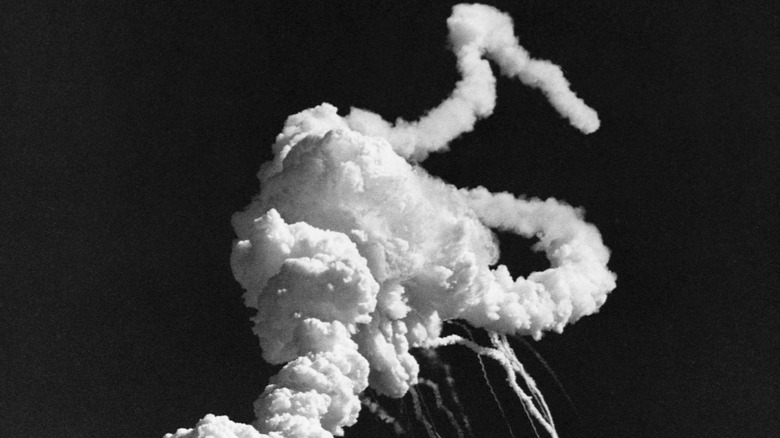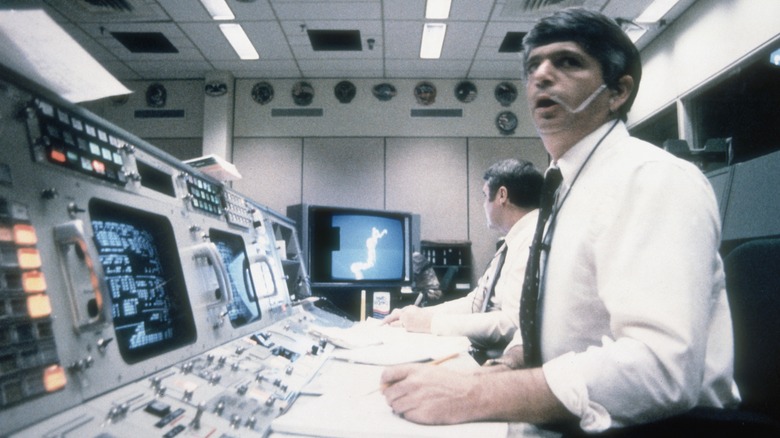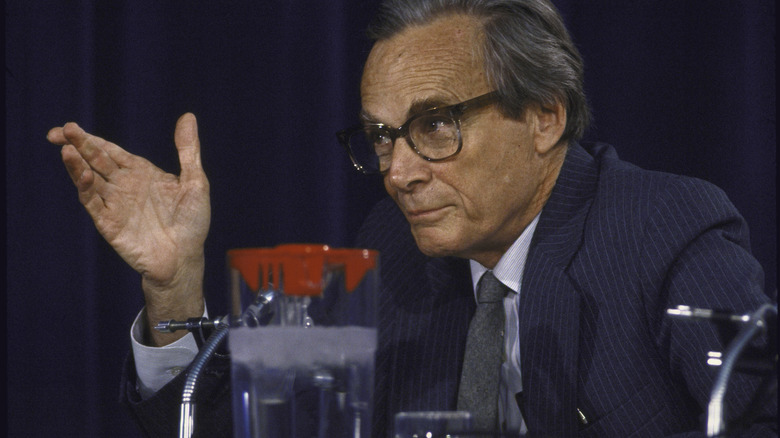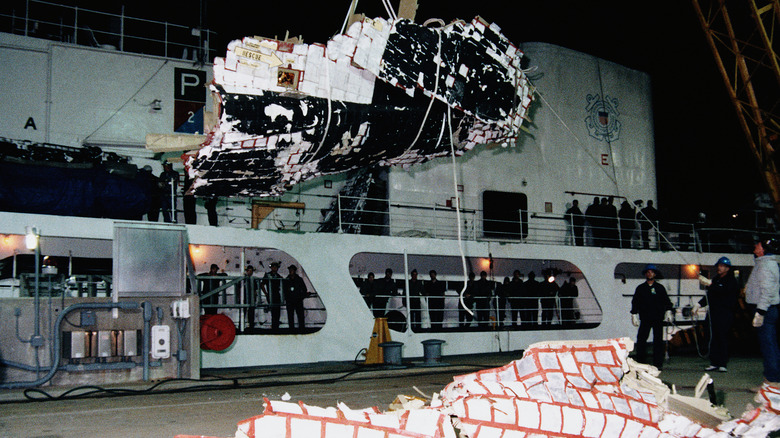The Challenger Disaster Timeline Explained
The Xennials are a micro-generation that got their name because of their position nestled between the feral children of GenX and the more sensible millennials. Born between 1977 and 1983, they have a lot of things in common: They grew up a little wild but alongside technology, the Oregon Trail holds a special place in their collective hearts, and they were at precisely the right age to have their earliest trauma happen when their innocent grade- and pre-school selves watched the Challenger disaster unfold live on television.
Challenger launched on January 28, 1986, and when it took to the skies for a brief 73 seconds before a fiery demise, it was a veteran space shuttle that had launched 10 times before. And it was a huge deal, too. The Challenger was NASA's second shuttle in space (in 1983), it carried the first female and Black astronauts the U.S. had sent into space, and remember hearing about the first spacewalk? That was Challenger, too.
The shuttle also had a history of delays, difficulties, and malfunctions, but good ol' American grit and know-how pushed through successful mission after successful mission. That, perhaps, was why everyone was so excited to see the first teacher — Christa McAuliffe — head up into the stars, where she was going to broadcast lessons from space. That meant massive media attention... and it also meant scores of people were watching when Challenger rose into the frosty January morning, then shattered over the Atlantic. Here's what happened... minute by minute.
Groundwork for the disaster was set years earlier
Context is everything, and when it comes time to talk about the timeline of the Challenger shuttle disaster, it's worth talking about the fact that it was kind of inevitable. Buoyed by safety records of airlines, pretty much everyone thought that it was perfectly reasonable to think of NASA's spacecraft as similar to an airplane: infinitely reusable, reliable, comfortable, and safe.
But there was a massive problem with risk analysis. A three-volume study published over several years and starting in 1979 estimated that the chances of a shuttle breaking up on launch — exactly like Challenger did — were between 1 in 1,000 and 1 in 10,000. The weakest point? Solid-fuel rocket boosters, and keep that in mind, because that's going to become very important. Fast forward to 1983, and another study that suggested it was closer to around 1 in 100.
After the Challenger disaster, physicist Richard P. Feynman wrote a piece on his observations of the historical oversights that allowed for the lead-up to the disaster. He wrote (via IEEE Spectrum), "The higher figures [1 in 100] come from working engineers, and the very low figures [1 in 100,000] from management." The Challenger accident resulted in the establishment of a program that would collect data — including flight and test data — for risk assessment, and this was something new. In the years prior to Challenger, there was no such data collected, as NASA didn't think it was necessary. And that kind of explains how egregious oversights happened.
The countdown to Challenger's final days started on January 22, 1986, the original launch date
Prep for Challenger's launch and mission was a months-long process that started in 1984, included 37 weeks of crew training, and the date of the disaster wasn't the originally-planned launch date. After a Flight Readiness Review on January 15, launch times and dates were changed multiple times to account for the possibilities of aborted landings and the best time to view Halley's Comet, which was a big part of Challenger's mission (along with deploying the Spartan satellite).
The initial launch date was January 22, 1986, but on December 23, 1985, it was postponed until the following day. It was postponed again until the 25th, and that's when things started getting tricky. That particular January was exceptionally cold, and with temperatures dropping to well below freezing, it was clear that Challenger was going to be launching in temperatures that no shuttle had ever launched in before. Launch was pushed back from the 26th to the 27th because of weather concerns, and on the 27th, Challenger got very close to leaving the launch pad.
(Want to learn more about NASA's first female astronauts? We've got you covered.)
Challenger's launch attempt on January 27 was aborted in the last minutes
The Challenger crew was locked, loaded, and ready to go on the morning of January 27, and according to NASA records, everything was going according to plan. Shuttle preparations started at 12:30 a.m. and, after waking up at 5:07 a.m., the crew was strapped into their assigned positions in the shuttle at 7:56 a.m. (If that doesn't seem like much time at all, consider this: After launching, their tightly-packed schedule only allowed for 8 hours of sleep starting 18 hours after they woke on launch day.)
It was about an hour later that Challenger's crew alerted control to a "door ajar" signal. The problem was with an exterior hatch, which ended up being the source of multiple problems. After the ground crew secured the door, they couldn't remove the exterior handle — the screws that held it in place were frozen. Over the course of two hours, ground crews struggled to remove the hatch handle with screwdrivers, a drill, and a hacksaw, and by the time they finally managed to get it off, the crew had been sitting in place for five hours and the launch window had passed.
Kennedy Shuttle Chief Bob Sieck issued a statement (via the Gannett News Service), saying: "It was just not our day. Our plan is to recycle and go for Tuesday morning." The countdown had stopped at 9:10, just 27 minutes before the launch deadline.
January 27, 5:45 pm: An appeal to scrub the mission from Morton Thiokol
The Challenger disaster came very close to not happening at all — and if it had been up to engineers from Morton Thiokol, it wouldn't have. Morton Thiokol is the company that made the O-rings that were famously blamed for the Challenger disaster and, on January 27, they held a meeting with NASA to appeal to the powers that be: "Don't launch in these temperatures." (The details of the call were recounted in "Contest for the Heavens: The Road to the Challenger Disaster," via Nick Ingram Consulting).
Earlier that day — at around 1 p.m. — NASA reached out to Thiokol to ask whether or not the cold would cause potential problems. Management spoke among themselves first, convened with engineers by 2:30 p.m., and at 5:45, they conferenced with NASA to recommend not launching at all.
After more discussion, another conference was called for 8:45 p.m. Engineer Roger Boisjoly argued that the O-rings weren't designed to function in the kind of unseasonably freezing weather that Florida had been experiencing. Simply put, the O-ring is a rubber gasket that seals hot gases produced during solid-fuel launches. When the rubber gets too cold, it's not flexible enough to seal completely, and launching with improperly set O-rings could mean leakage and ultimately, disaster. On the basis of engineer recommendation, Thiokol heads stated that no launch should be undertaken in temperatures below previously-tested conditions of 53 degrees Fahrenheit. That was their stance until 10:30 p.m.
Morton Thiokol backs down
Arguments over the safety concerns created by the temperature were going nowhere when contractor Morton Thiokol and NASA ended their conference to discuss matters further and reconvene. When they did, it was to recommendations that would doom the Challenger and crew.
The teleconference picked up again at 11 p.m., and engineer Roger Boisjoly would later explain (via Nick Ingram Consulting), "it is hard to understand how those at NASA and Marshall could have thought the Challenger flight ready unless they presumed that unless the engineers could show that the flight would fail, then it would succeed." In other words, Thiokol engineers couldn't show concrete proof that the O-rings were going to fail, so it was decided that they would be fine.
Executives at Thiokol faxed over their signed affidavit that the Challenger was all right to launch at 11:45 p.m., even as some at NASA continued to argue that the launch just wasn't a good idea.
Debate over safety and the problems presented by the cold continued the next morning
January 28: Launch day. Overnight temperatures had once again been well below freezing, and at 1:35 a.m., crews were dispatched to the launch site to decide whether or not ice was going to be a problem. (Pictured is the frozen launch ramp.) At the same time, hardware issues with the ground liquid hydrogen storage tank were discovered, which set fueling time back. At 3 a.m., inspection teams submitted their report for consideration, and the countdown continued.
That delay, however, pushed things back a bit. The crew was scheduled for a wake-up at 6:18, but they were all reportedly awake as debate over the mission continued. As early as 5 a.m., there was another discussion about the O-rings, but it wasn't even mentioned at the 9 a.m. meeting to discuss the findings of a second inspection of the launch site. When that had started at 7 a.m., ice and cold temperatures were still a massive concern, but the launch still continued.
For the crew, it was business as usual as they prepared for launch
The Challenger's launch delay meant that the crew had some extra time to prepare — especially since they were awake before their 6:18 a.m. wake-up call. According to NASA reports, they were able to take their time over breakfast and while, they were briefed on things like weather conditions and temperature, there's a horrible little footnote buried in the official logs: "Neither then nor in earlier weather discussions was the crew told of any concern about the effects of low temperature on the Shuttle System."
The media was, of course, there, including CBS Radio News reporter Frank Mottek. A year after the disaster, he recalled watching the crew get ready: "We watched the crew members gather together for breakfast, take their trip to the launch pad, put on their space suits and board their space ship. We saw Christa McAulife smile as a technician gave her an apple."
The crew arrived at the launch pad at 8:03, and 33 minutes later, they were strapped in and ready to go. Eight minutes later, another ice inspection finished and resulted in another delay, with yet another ice inspection wrapping up at 11:15. Then it was go-time.
73 seconds passed between engine ignition and a loss of signal
The actual destruction of the Challenger spacecraft happened very, very quickly, and the flight lasted just 73 seconds. Launch began at the very precise time of 11:38:00:010 a.m. This is the NASA transcript from the disaster, and yes, that really is all there is to it:
-6.6 sec.: Space Shuttle engines ignition
0 sec.: Solid Rocket Booster ignition
+7 sec.: "Roll program." (Challenger). "Roger, roll, Challenger." (Houston)
+24 sec.: Main engines throttled down to 94%
+42 sec.: Main engines throttled down to 65%
+59 sec.: Main engines throttled up to 104%
+65 sec.: "Challenger, go at throttle up." (Houston) "Roger. Go at throttle up." (Challenger)
+73 sec.: Loss of signal from Challenger
NASA maintains that there were no signs that anything was going wrong. Everything was absolutely normal, processes and procedures were going as planned, there were no alarms or warnings, and then suddenly, there was nothing. Eerily, NASA has stated that the first indication that things were going to go horribly wrong was the same moment that shaped the childhood of countless students who watched the broadcast via a satellite link to schools: the moment the shuttle began to break apart.
Here's how it played out for witnesses on the ground
Among the eyewitnesses on the ground was Washington Post reporter Kathy Sawyer, and she had a particular interest in the launch as she was in the running to be the first journalist on a space shuttle. She described what the moments on the ground were like: "We felt the blast from the launch hit us in the chest ... we couldn't see clearly what had happened at first." The NASA personnel in the crowd understood first, "and they had already started getting tears in their eyes."
Also on the ground were about 350 other people, including neighbors of shuttle pilot Michael J. Smith and friends of Christa McAuliffe. From their point of view, things happened almost instantaneously; by the time the sound of liftoff reached them, they saw the flash-burn and the fiery clouds. NASA's Gary Barton was there to film the launch and said (via The New York Times) that he knew something had gone horribly wrong just seconds before others began asking, "Could something be wrong?"
Officials immediately ordered everyone to their cars, where they sat, cried, and listened for updates. They were allowed to leave after 90 minutes after officials decided that the 70-odd cars wouldn't interfere with emergency vehicles. The program that would have sent Sawyer to space was suspended, but she said that she would still have gone: "As a reporter it would be a heck of an assignment, a heckuva story."
NASA Mission Control continued to report all was normal
Challenger launched from Cape Canaveral, Florida, while under the watchful eye of Houston's Mission Control. While it took just 73 seconds for the Challenger mission to go terribly wrong, The New York Times reported that in the minutes following the disaster, Mission Control continued to report that everything was fine.
In fact, 105 seconds after launch, Public Affairs Officer Stephen A Nesbitt was still tracking Challenger on radar... only, he wasn't. After stating: "Flight controller here looking very carefully at situation. Obviously a major malfunction," a NASA spokesman had to explain what happened on their end. John Lawrence said: "There is just nothing to report — there were no problems in the control room. When you go through simulations, as a rule, you can see the problems develop. That's why Nesbitt continued."
It wasn't until slow-motion footage was reviewed that investigators saw the flame coming from one of the rocket boosters — that would be connected to the O-rings that had been the subject of heated debate for hours before the launch and disasters. That July, it was widely reported that NASA had released evidence that suggested the crew was at least briefly aware of things going wrong. They had recorded the activation of three emergency packs, and released the last recorded voice; Pilot Michael J. Smith could be heard saying, "Uh-oh," at the 73-second mark.
A former Manhattan Project scientist put the issue of 'why' to rest
NASA was never the same after the Challenger disaster. Almost immediately, experts were sent scrambling to figure out what happened and why it was someone else's fault. One of the experts they called in — who only reluctantly agreed to be a part of the investigation — was physicist Richard Feynman, who had previously worked on the Manhattan Project (which led to just one piece of technology we wouldn't have had without World War 2), diagrammed the interaction between light and matter, and won a Nobel Prize.
Feynman was promised NASA's full cooperation, but he would later write (via Lithub) that the whole process was "in reality, sitting around doing nothing most of the time." So, he took matters into his own hands, headed to NASA headquarters, and instead of chatting with NASA management, he spoke with engineers before he was (perhaps tellingly) barred from the building. He had already caught wind of the dispute over the O-rings, and then he took part in the Rogers Commission hearings.
There were two incredibly important moments. One was Feynman's demonstration — with the help of pliers, a clamp, an O-ring, and some ice water — of how rigid, inflexible, and ready-to-leak O-rings became when subjected to cold temperatures. The other was seven words from Morton Thiokol rocket booster director Allan McDonald, who — after NASA denied they were aware of problems — stood up to say, "Mr. Chairman, we recommended not to launch."
Most — but not all —of the recovery was completed in three months
In April 1986, NASA announced that recovery operations were finished, most of the shuttle had been recovered, and the remains of all seven astronauts had been retrieved. Operations had focused on an area 17 miles off the coast of Florida, and they added (via The New York Times), "final forensic work and future planning in accordance with family desires will be completed within the next several days, and will be announced when appropriate." Descriptions of the scene were pretty awful, with the Challenger described as "little more than a pile of rubble on the ocean floor, 8 feet high and 50 feet across," while "the astronauts' remains ... could not be recognized as human."
Not all pieces of Challenger were recovered, though. In 1996, two pieces — part of the left inboard wing flap — washed ashore at Florida's Cocoa Beach. They weren't small pieces, either — one 8 by 14-foot piece required heavy machinery to move it. Then, fast forward to 2022: Divers looking for a World War II-era rescue plane and filming for a History Channel special (relating to the Bermuda Triangle) found a 20-foot-long piece of Challenger. They turned their findings over to NASA, who issued a statement that read (in part, via CNN), "This discovery gives us an opportunity to pause once again, to uplift the legacies of the seven pioneers we lost, and to reflect on how this tragedy changed us."
